With very modern undertones, Alice & the Queen of Hearts: Back to Wonderland is a vibrant tribute to Alice in Wonderland, Disney’s animated masterpiece released in 1951. This is an opportunity to look back at the original inspiration behind the latest Walt Disney Studios Park production.
A PROJECT OVER 100 YEARS OLD
Lewis Carroll’s book, Alice’s Adventures in Wonderland, always held a special place in Walt Disney’s heart. When he arrived in Los Angeles in summer 1923, he carried with him a very special project in his luggage, which he hoped would win over American audiences. It was a highly original retelling of this story, in which a real little girl enters a cartoon world. This novel concept hit the bull’s eye and found favour with one of the greatest producers of the time, Margaret Winkler, who had already launched the career of Felix the Cat.
The contract she signed with Walt and Roy Disney was by no means insignificant. It paved the way for the creation of the future hit series, Alice Comedies, for which the Disney Brothers Cartoon Studio went on to become famous. Above all, it marked the birth of The Walt Disney Company on 16 October 1923.
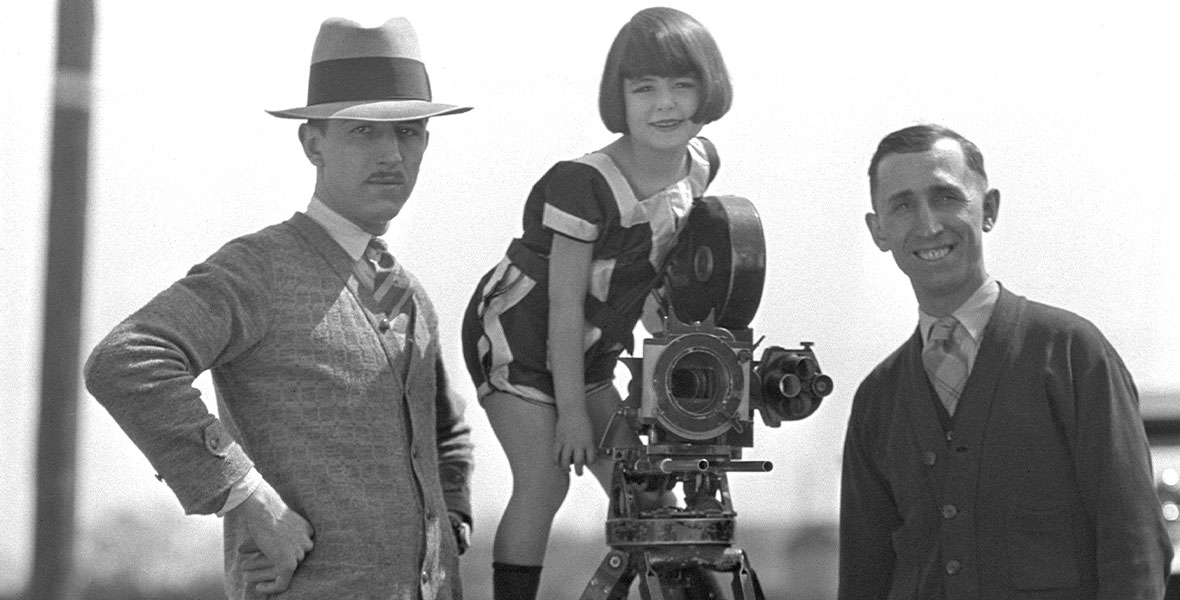
This iconic series is also a testament to Walt’s ability, right from the start, to take a classic story and completely revisit it through the art of animation.
The fantasy and visual potential of the original novel lend themselves particularly well to being brought to life in cartoons, where anything is possible. After the success of Alice Comedies, Walt Disney did not stop there.
As early as 1933, he planned to turn Alice’s Adventures in Wonderland into a feature film, still based on the concept of a live actress entering a world of toons. For the title role, he considered casting well-known star Mary Pickford, and then Ginger Rogers in 1945, as well as Luana Patten, the young actress in Fun and Fancy Free (1947). It wasn’t until late 1947, after a long gestation period for both the screenplay and design, that Walt officially decided to embark on a fully animated adaptation.
“IN A WORLD OF MY OWN”
Despite the fantasy elements, Lewis Carroll still presents a very specific imaginary world, and it would take Walt Disney and his artists several years and many attempts to strike the right balance between remaining true to the original material and creative freedom.
A number of screenplay options were explored, some far removed from the novel. A 1945 version explored the idea that Alice’s cat, Dinah, who first chased the White Rabbit, was then transformed into the Cheshire Cat on entering Wonderland. The well-known science-fiction writer, Aldous Huxley, was also consulted that same year, and proposed yet another very different approach that made Lewis Carroll the main character.
In the end, Walt chose a screenplay closer to the original novel, focusing on the most iconic characters and scenes in the story, and adding certain elements from the second novel about Alice, entitled Through the Looking Glass, such as the twins Tweedle Dee and Tweedle Dum, and the Walrus and the Carpenter.
Although initial design experiments by Disney artists remained close to the original illustrations by John Tenniel, in the end, the film’s visual identity was provided by the artist Mary Blair, who had distinguished herself for her work on Saludos Amigos (1942) and The Three Caballeros (1944). Walt was particularly fond of the film’s clean, colourful, naive approach, and insisted that his brand was as visible as possible in the film. That said, it is possible that Salvador Dali, who worked with Disney in 1946 on the short film Destino, also had some influence on some surrealist elements in the film.
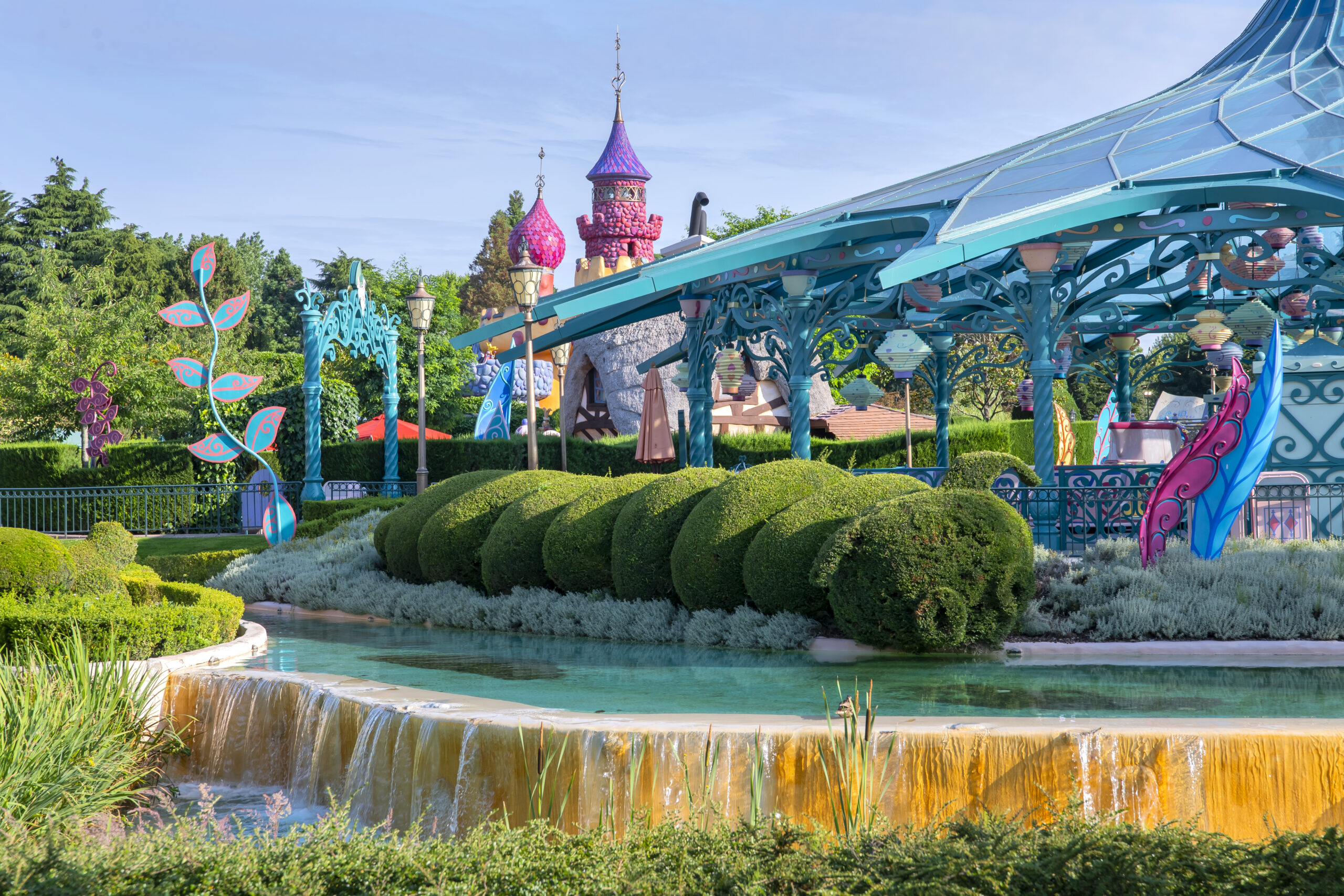
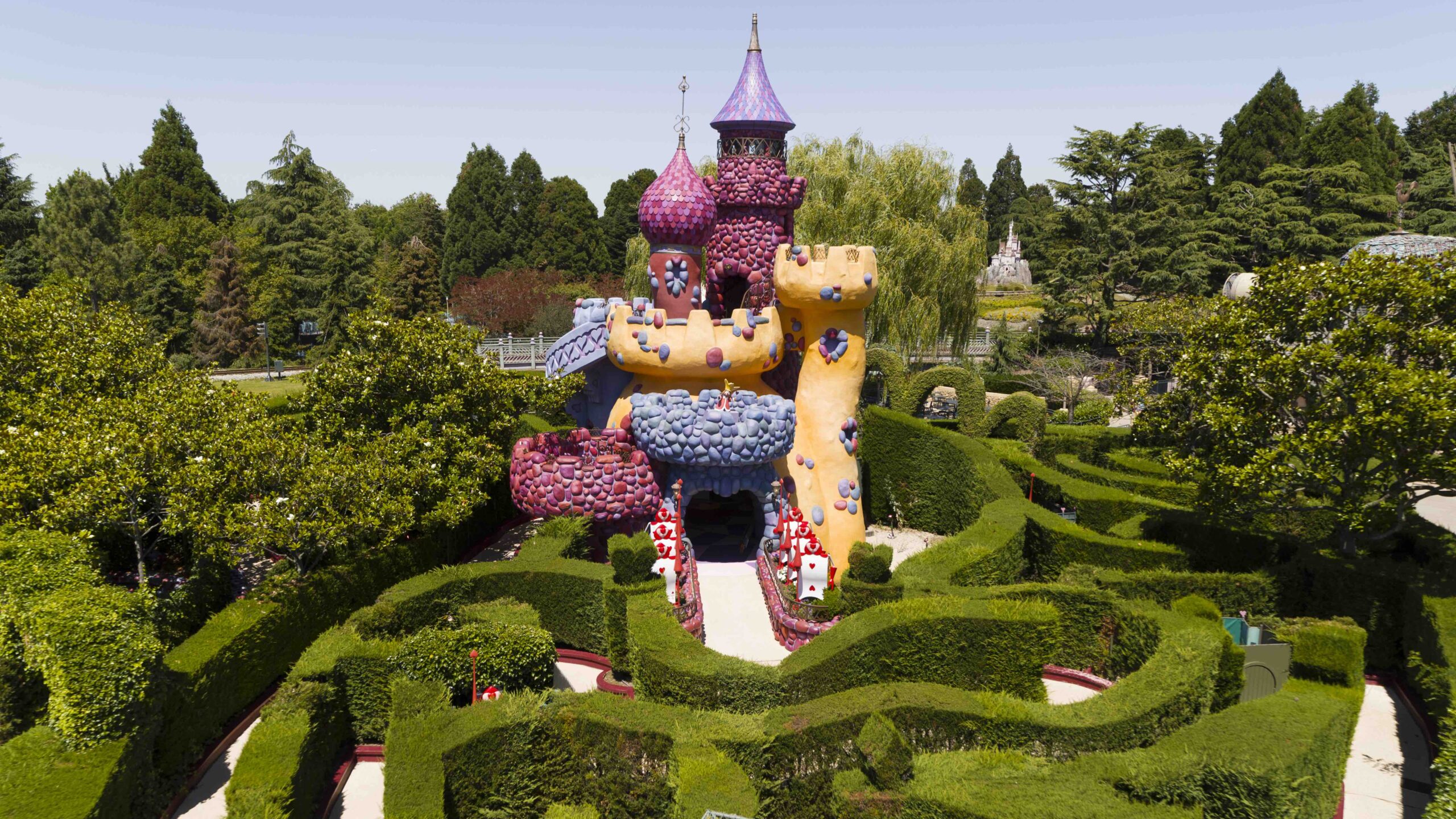
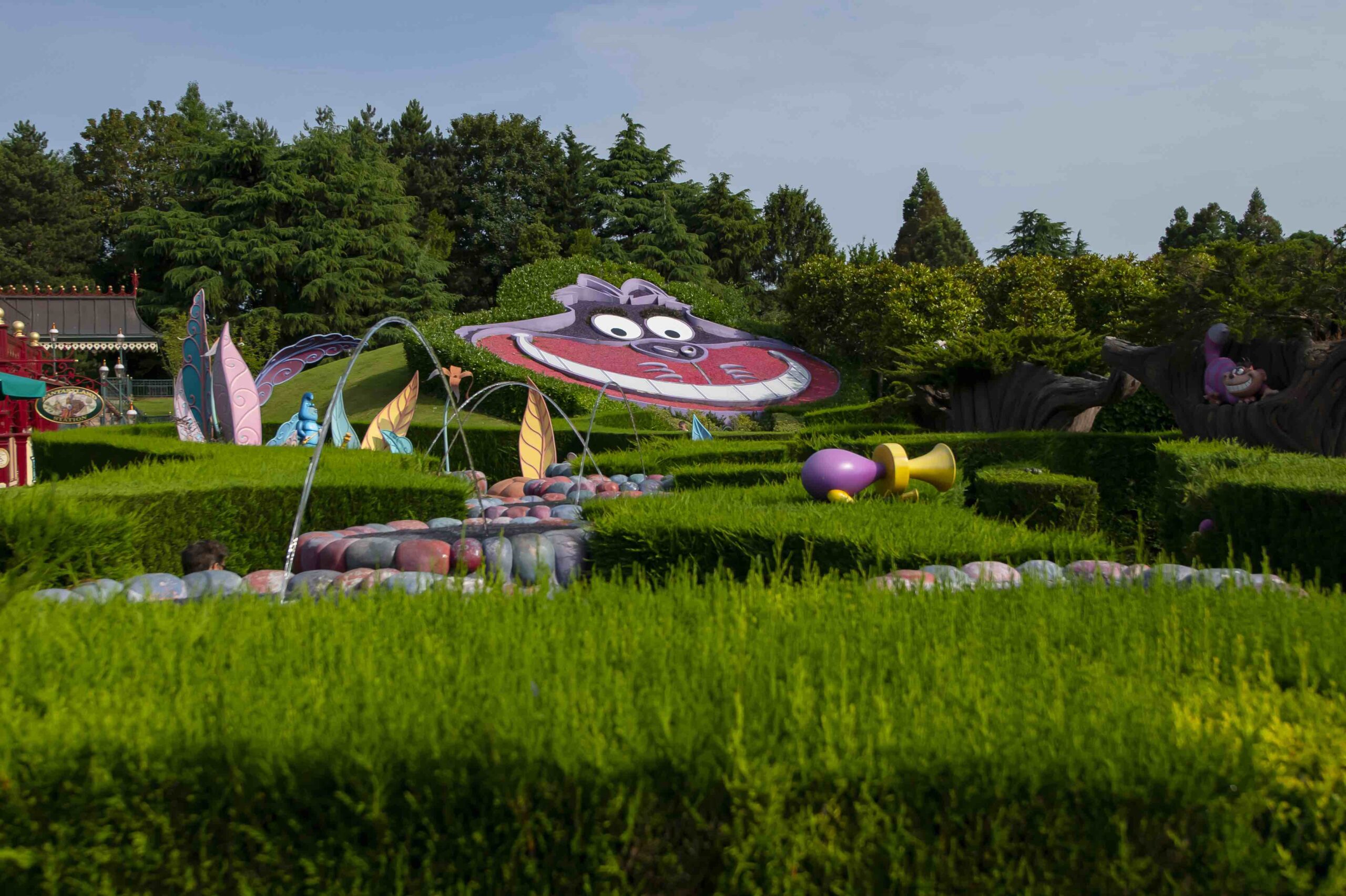
Illusions of scale, perspective and colour are typical of the film, and are particularly evident at Disneyland Paris in the Fantasyland zone inspired by Alice in Wonderland, with March Hare Refreshments and the Mad Hatter’s Tea Cups, which recall the tea party, and Alice’s Curious Labyrinth, which is reminiscent of the Queen of Hearts’ estate, not forgetting The Small Cottage of Toys with its weathervane so crazy you won’t know where the four compass points are!
And it’s the same quirky, even downright madcap spirit that you’ll find in the sets and costumes of the brand new show Alice & the Queen of Hearts: Back to Wonderland.

A MUSICAL WONDERLAND
Music plays an essential role in Alice in Wonderland. Let’s not forget that Lewis Carroll had already peppered his novel with nursery rhymes and song lyrics that directly inspired the authors and composers of the film.
No fewer than forty songs were considered during the process, of which some fifteen were finally chosen, making it one of the Disney Classics featuring the highest number of songs.
It was Frank Churchill, who was responsible for much of the music in Snow White and the Seven Dwarfs and Dumbo, who laid the film’s musical foundations back in 1939, and although none of his suggestions made the final cut, two of his melodies made their way into Peter Pan (1953), one becoming “The Second Star to the Right”, and the other the famous Crocodile theme.
Finally, as with Cinderella, it was writers and composers from Tin Pan Alley, New York’s famous breeding ground for musicians, who wrote most of the songs for Alice in Wonderland, especially Sammy Fain and Bob Hilliard. Mack David, Al Hoffman and Jerry Livingston were all consulted by Walt while they were still working on Cinderella to provide their expertise on a key scene in the film, the famous Tea Party, with which designers were struggling at the time. After viewing an early version, Mack David came up with the idea of an “unbirthday” that would provide a reason for this very special tea party, along with a heavy helping of the absurdity and madness that characterise the Mad Hatter. All that remained was to write the song, which was to become an essential part of the film.
This surrealist world, zany characters, an original design and unforgettable music all came together to inspire the creators of the show, Alice & the Queen of Hearts: Back to Wonderland, which offers a modern twist on all these favourites.
All the more reason to be curious…

